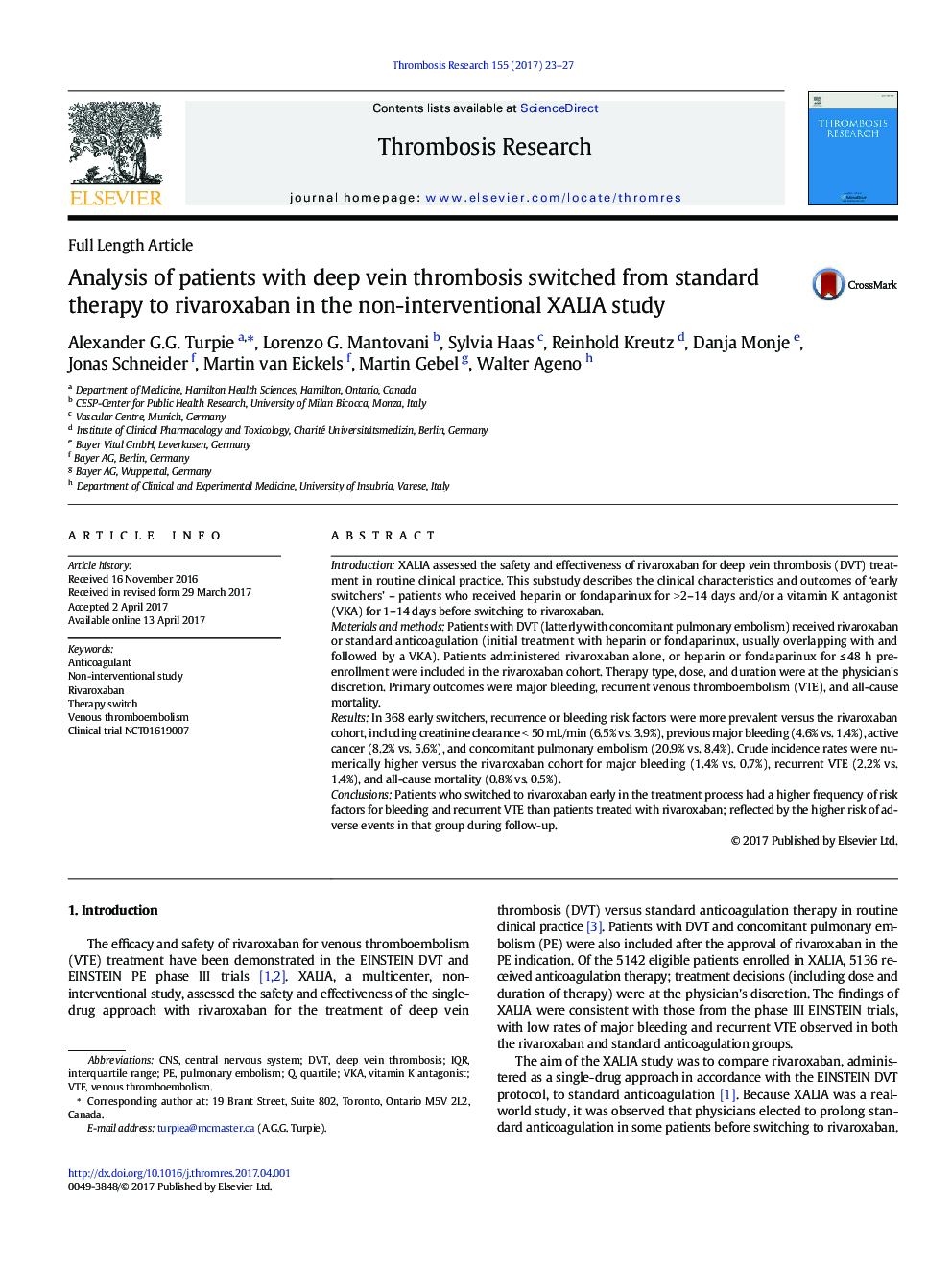| Article ID | Journal | Published Year | Pages | File Type |
|---|---|---|---|---|
| 5622019 | Thrombosis Research | 2017 | 5 Pages |
â¢'Early switchers' received rivaroxaban after prolonged parenteral/VKA therapy.â¢They had more VTE recurrence risk factors than the rivaroxaban cohort.â¢The crude incidence rates for the primary outcomes reflected this difference.â¢Hospital stay duration was also longer for early switchers.
IntroductionXALIA assessed the safety and effectiveness of rivaroxaban for deep vein thrombosis (DVT) treatment in routine clinical practice. This substudy describes the clinical characteristics and outcomes of 'early switchers' - patients who received heparin or fondaparinux for > 2-14 days and/or a vitamin K antagonist (VKA) for 1-14 days before switching to rivaroxaban.Materials and methodsPatients with DVT (latterly with concomitant pulmonary embolism) received rivaroxaban or standard anticoagulation (initial treatment with heparin or fondaparinux, usually overlapping with and followed by a VKA). Patients administered rivaroxaban alone, or heparin or fondaparinux for â¤Â 48 h pre-enrollment were included in the rivaroxaban cohort. Therapy type, dose, and duration were at the physician's discretion. Primary outcomes were major bleeding, recurrent venous thromboembolism (VTE), and all-cause mortality.ResultsIn 368 early switchers, recurrence or bleeding risk factors were more prevalent versus the rivaroxaban cohort, including creatinine clearance < 50 mL/min (6.5% vs. 3.9%), previous major bleeding (4.6% vs. 1.4%), active cancer (8.2% vs. 5.6%), and concomitant pulmonary embolism (20.9% vs. 8.4%). Crude incidence rates were numerically higher versus the rivaroxaban cohort for major bleeding (1.4% vs. 0.7%), recurrent VTE (2.2% vs. 1.4%), and all-cause mortality (0.8% vs. 0.5%).ConclusionsPatients who switched to rivaroxaban early in the treatment process had a higher frequency of risk factors for bleeding and recurrent VTE than patients treated with rivaroxaban; reflected by the higher risk of adverse events in that group during follow-up.
